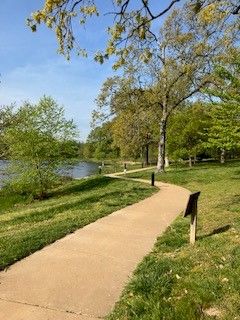Creativity
Step Up Your Health With These 18 Diverse and Fun Walks
For health, fitness, and pleasure, experiment with a variety of walks.
Posted May 2, 2023 Reviewed by Ekua Hagan
Key points
- Walks have physical health, mental health, brain, and pleasure benefits.
- Benefits of walking include lower risk of chronic illness, relief from depression and anxiety, lower blood pressure, and brain health.
- Variety in one's walk "menu" will provide stimulation for the brain and lift mood.
Even if you are a regular walker, there is an entire world of walking out there that can provide you with even more fun, pleasure, and novelty than you may have realized. This post will take you on 18 different kinds of walks—and all contribute to your fitness, happiness, and mental health.
By now, you probably know many of the benefits of walking. In case you need a quick review, here’s a list from a recent Harvard Health Letter (May 2023): “Regular, brisk walking helps lower LDL (bad) cholesterol, control blood pressure, strengthen muscles, burn calories, and lift mood. Walking can also help ward off high blood pressure, heart disease, stroke, and diabetes.” In addition, walking helps prevent premature deaths and increases longevity.
Walking provides brain and mental health benefits, too, including mood lift, creativity, memory improvement, and even less ruminative and negative thinking. Walking can also reduce symptoms of depression and anxiety as well as reduce the risk of dementia and other types of cognitive impairments.
Below I’ve listed 18 different walks, of all lengths and types. Just taking a variety of walks can increase your exercise pleasure. Novel walks will stimulate your brain, release pleasure chemicals like dopamine and serotonin, and inspire you to keep going.
Walk #1 may come as a complete surprise.
18 Types of Walks
1. The StoryWalk. A StoryWalk1 consists of pages from a children’s picture book installed at intervals along a short path. Parents and grandparents can walk this path with a child or, as I did during the pandemic, share the story with my grandchild over Zoom. With this walk, you get entertainment, exercise, and connection. Because I love picture books, I enjoy reading the stories alone, too. Periodically, our local librarians change the featured book, adding to the novelty.

2. The Two-Minute Walk. You might think micro-walks of five minutes or less would contribute little to nothing to your health. But you would be wrong. As this New York Times headline asserts: “Just 2 Minutes of Walking After a Meal Is Surprisingly Good for You.” Why? A short walk can lower your blood sugar level. More here. Short walks add up, too, and contribute to your total weekly exercise minutes.
3. The I-Hate-to-Exercise Walk. This is a close relative of the Two-Minute Walk. If you want to be healthier but hate to exercise, just set a goal of a 2- to 10-minute walk per day. Studies show people perform better when they think their goals are achievable. Someday, you may even find that your “tiny habit” of short walks morphs into a full-fledged exercise habit. And free yourself from the standard of 10,000 steps/day. Health benefits begin at 4400 steps, according to this study.
4. The Classic Exercise Walk. The World Health Organization (WHO) recommends that adults get 150-300 minutes of moderate-intensity exercise per week for general health. I aim for 150 minutes/week (That’s 30 minutes a day, 5 days a week, or about 20 minutes for 7 days/week). Twice a week, I walk with light weights—two pounds, usually—to kick it up a notch and retain muscle mass. Or I take the walk below:
5. The DVD Walk. I can't bear to exercise outdoors when it’s cold. But luckily, I have a wonderful (retro) collection of DVDs for walking, Pilates, and aerobic dance. Dancing, as one instructor puts it, is just a fancy walk. While my collection is decades old, the internet is full of online exercise videos and Zoom classes for your indoor walking pleasure.

6. The Meditative Walk. If you can “leave behind thoughts about the past and future and concentrate on the present… the walk will have all the benefits of meditation. Sometimes, people who struggle with classic meditation can achieve it during a walk.” So says Bruno Rubiero.2
7. The Notice-Things Walk. This walk is in the same family as the meditative walk. Take a walk with the intention to notice one or two specific things…birds, gardens, or how many houses sport a brightly colored door. Setting out to notice things can keep you more mindful as you walk. You’ll use your senses and give your thinking brain a break.
8. The Never-Before Walk. Walking in a place you’ve never been before can stimulate your brain. According to Rubiero, walking in “unknown landscapes” causes the brain to release dopamine, “a neurotransmitter that marks novelty in the brain and allows us to identify danger or pay attention. A good daily dose of dopamine will increase another neurotransmitter, serotonin, which is responsible for our mood. The walk helps to keep both neurotransmitters at high levels.” Even starting your regular route in the other direction is stimulating, according to my brain.
9. The Work-Break Walk. In as little as five to 15 minutes, a work-break walk can clear your mind as well as stretch your legs. Studies show that strategic work breaks can prevent decision fatigue, restore motivation, and boost creativity and productivity, in addition to reducing the risk of "sitting diseases" like obesity and diabetes. More here.
10. The Treadmill Walk. Whether your treadmill is in the gym or at home, this walk enables you to watch TV, chat with a friend, or listen to music while you walk. You can spice it up with occasional bursts of jogging or running.
11. The Indoor Walk. Many gyms offer an indoor “walking path.” Don't want to join a gym? (Me either.) Malls offer a colorful walking destination, especially in bad weather. Your living space can also provide short indoor walks. In fact, you can improve your cardiovascular health with short bouts of stair-climbing, as this study shows.
12. The Nature Walk. Hiking (a.k.a, a long walk) or strolling in nature is a treat for the senses, and it’s also a treat for the nervous system. More and more studies reveal that walking in nature soothes the brain and reduces stress. If you need to rest your mind and restore your spirit, walk in nature.
13. The Urban Walk. While you may consider an urban walk a bit “pedestrian,” noticing the shops, streets, people, and parks of your community while exercising your body can have its own unique pleasures. Walkers in Paris, called flaneurs, became famous for their lengthy strolls through their city. You could also consider this walk a "promenade," described by the dictionary as “a leisurely walk, especially one taken in a public place as a social activity.” Go ahead, show yourself off.
14. The HIIT walk. “HIIT” stands for “high-intensity interval training,” meaning alternating your usual walking pace with periodic bursts of intense activity. HIIT adds more benefits to your exercise plate, such as stronger bones, increased stamina, and fat-burning. As an “extreme moderate” exerciser, strenuous exercise does not appeal to me. But I do my modified version of HIIT by walking the sidewalks and jogging the streets.
15. The Mental Health Walk. I would like to emphasize how effective exercise is for improving mental health, warding off dementia, and relieving stress. In this study, exercise even outperformed medication for the relief of depression and anxiety. (Of course, consult your doctor about what would work for you.)
16. The Take-Someone-Else-for-a-Walk Walk. Vary your walks by taking your dog, child, friend, or spouse along with you.
17. The Good-Cause Walk. To walk for a cause, you pay a fee to walk. A portion of the fee goes to your charity, and you get to be part of a pack of walkers, all of whom believe in the same cause you do. This kind of walk can lift your spirit as well as your mood.
18. The Creativity Walk. In a study cleverly titled, “Give your ideas some legs: The positive effect of walking on creative thinking,” Stanford researchers discovered that walking gave a boost to creative thinking, both in real time and shortly after. “Walking opens up the free flow of ideas, and it is a simple and robust solution to the goals of increasing creativity and increasing physical activity,” the authors write. If you want to spark more creativity, the authors suggest an easy pace rather than an intense one, so that your mind doesn’t have to devote its resources to directing your movements. PT blogger Linda Andrews further suggests a solitary walk, allowing the mind to wander freely rather than focusing on conversation.

No, this is not an exclusive list. Right now, I could add to the collection. For example, I recall the classic film, Easter Parade, where everyone strolls along 5th Avenue in their new bonnets. A Parade Walk? And yes, there is quite a bit of overlap among these walks. But that only adds to the synergy, as I recount below.
Recap
You may wonder: Where did I get the idea for this post? While walking, of course. Apparently, my intended exercise walk turned into a creativity walk.
© Meg Selig, 2023. All rights reserved. For permissions, click here.
References
1. The StoryWalk idea was the brainchild of health worker Ann Ferguson and developed with the help of Kellogg-Hubbard Library. “StoryWalk(TM) is a registered Trademark of the Kellogg-Hubbard Library, Montpelier, Vermont. If you use this terminology you must comply with specific guidelines. However, anyone can hold this type of event and call it something else, such as “Story Book Trail,” “Book Walk,” or “Path of Pages." More here.




